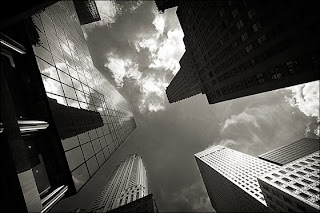Max Carter
U3
Tim Barber
Introduction
I have been studying Tim Barber's photos, one shoot in particular which is my favourite and what I am going to focus on, this shoot is 'Destroyers' a fashion shoot for Nike for one of their Varsity Jackets. The shoot focuses on a group of skaters, riders and just mates hanging around New York. I have chosen Tim Barber because I like how he presents the Urban feel in his photo's, it's laid back and natural, it doesn't look set up like a lot of fashion shoots do. I really like the way he composites some photos, he sometimes put's two together and separates them with a white line, and usually these photo's go really well with each other, it's fairly unique, and interesting when done correctly, I will be using this technique in my photos. He also shoots in Black & White, with fairly high contrast to make it stand out more. I think he has made a slight impact into the fashion/sport genre, for example he doesn't always concentrate on the Jacket that Nike are trying to sell, it seems he concentrates more on the people wearing it, it makes you want to learn more about them. From his work I will use the split techniques he uses and the way he composites his photo's and the black and white photos.
Biography
Tim Barber was born in 1979 In Vancouver,British Columbia and grew up in Amherst,Massachusetts, but he now lives in New York City. He used to be the photo editor at Vice Magazine and co-curator of the 2008 New York Photo Festival. He also runs the online gallery and image archive tinyvices.com, where visitors can submit their photographs. Tim has also curated and edited a series of five artists monographs that were published by Aperature Foundation in 2008. He has launched an independent publishing house, TV Books in 2008 and directed a three part music video for the New York band A.R.E Weapons in 2010. But for his photography work he has shot for brands such as Nike, Urban Outfitters, Stella McCartney, Woolrich and Opening Ceramony, and has shot editorial content for the magazines Muse, Twin, The Journal, Elle, Vogue Homme Japan, Marie Claire, and Dased & Confused. He is represented in the UK by Webber Represents and the US by 1+2 Management.
Image Analyse
Photo's In The Style Of.
Image Analyse
Shoot: Nike Destroyers
Year: 2010
Untitled
This is the first photo I am going to analyse from Tim Barbers 'Destroyers' shoot for Nike. I'm first drawn to the right frame of the whole photo, The guy on the left has a strong face, the slightly angry look he is giving is effective and stands out, It's shot in Black and White and is high contrast, and I also think it was shot in digital as it is very sharp and detailed, especially the ripple in his jacket. The left photo has a stalker look to it, as it's been shot through a chain fence and the guys aren't paying any attention to the camera, or haven't noticed it, it's slightly voyeristic, it's like we shouldn't really be watching them and makes you feel uncomfortable. The way he has framed these two photos together, they are both vertical but I'm not sure if they compliment each other (a bit random) Even though they are random and I feel like they don't compliment each other it still works, and it's difficult to explain why it does.The genre is fashion, but not in a typical fashion such as a photo studio with models posing etc, It feels natural, and the Urban feel is what I would like to recreate in my photos, from the way they are dressed and what they are doing. They can be separated with foreground and background, left half the fence would be the foreground and the guys would be the background, I'm not to sure about the depth of field though. For the right half the guys are the foreground and the background is clear, it's also a shallow depth of field as they(the foreground) are in focus. As said before I am first drawn to the right side scan there and then I am drawn to the voyeristic feel to the picture on the left. I don't he has used any other lighting equipment it seems like the lighting is just natural, however the lighting on the photo on the left is very soft on their faces, the lighting looks to be coming from the left. I think for the last photo it would of been a large f stop and a quick shutter speed to make the chain link fence blur out.
Untitled
This is the second photo I've chosen from the Destroyers shoot to analyse. The rider is the subject and my eyes are drawn to him straight away, this shot is also In black and white and I think it's digital. The rider is high contrast yet the background is low contrast, not sure if that has anything to do with depth of field or it's because he did something throughout photoshop or something similar to make the rider have higher contrast. The foreground and background are pretty obvious. As said before my eyes are drawn to the rider and then each individual building. I really like the New York backdrop/skyline. It's a fairly large depth of field because the skyline is in focus,If it was a small depth of field the skyline would be even more blurred.The horizontal composition helps with the skyline, seeing it has a skyline in the genre is both landscape and fashion.
















































